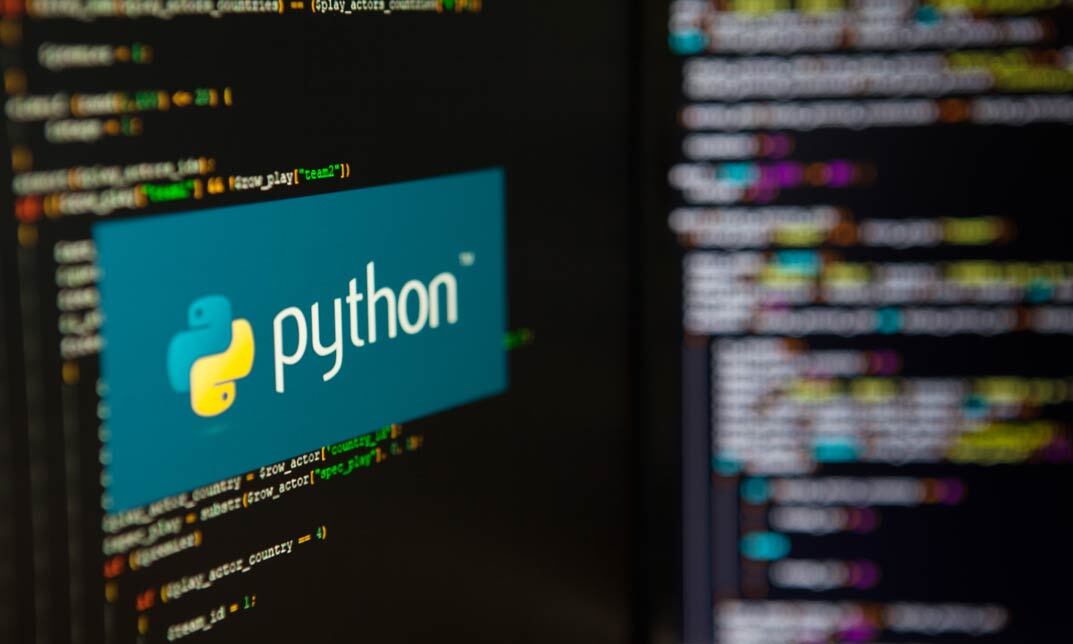Data Science & Machine Learning with Python
Advanced Diploma in Data Science & Machine Learning with Python at QLS Level 7 | CPD Certified | 24/7 Tutor Support
Master Data Science and Machine Learning with Python to transform data-driven decisions in businesses.
 Course Highlights
Course Highlights
Python has steadily ascended the ranks in the tech world, becoming the go-to language for Data Science and Machine Learning pursuits. Its versatility and ease of use make it an optimal choice for those aspiring to delve into the intricate realms of data analysis and algorithm development. By integrating Python into the curriculum, this course ensures that learners are not only familiar with the language but also proficient in its application to Data Science and Machine Learning tasks.
Data Science, on the other hand, stands as the backbone of today’s analytical advancements. With the ever-growing quantum of data, there’s a dire need for professionals who can sift through this data deluge and extract meaningful insights. This course simplifies complex topics, making it easier for learners to grasp the intricate mechanics of data manipulation, processing, and analysis. By emphasizing Python’s role in Data Science, the course underscores its significance in modern-day data operations.
Lastly, Machine Learning represents the pinnacle of automated data analysis. With the power of Python and the methodologies of Data Science, Machine Learning enables systems to learn from data and make decisions. This course elucidates these concepts, teaching learners to design, implement, and test Machine Learning algorithms. The synergy of Python, Data Science, and Machine Learning in this curriculum ensures that, by the end, learners are well-equipped to tackle any data challenge that comes their way.
Note: Skill-up is a Janets-approved resale partner for Quality Licence Scheme Endorsed courses.
 Learning outcome
Learning outcome
- Acquire in-depth knowledge of Data Science techniques using Python.
- Understand and implement Machine Learning algorithms.
- Analyze and visualize data with Python libraries like Pandas and Matplotlib.
- Evaluate and compare Machine Learning algorithms for optimum results.
- Develop real-time prediction models using trained datasets.
 Certificate of Achievement
Certificate of Achievement
Quality Licence Scheme Endorsed Certificate
Upon completing the final assessment, you can apply for the Quality Licence Scheme Endorsed Certificate of Achievement. Endorsed certificates can be ordered and delivered to your home by post for only £129.
Order Your QLS Certificate
An extra £10 postage charge will be required for students leaving overseas.
Skill Up Recognised Certificate
Upon successful completion of the Data Science & Machine Learning with Python course, you have the opportunity to request a Skill Up Recognised Certificate. This certificate holds significant value, and its validation will endure throughout your lifetime.
- 1. PDF Certificate + PDF Transcript: £14.99
- 2. Hardcopy Certificate + Hardcopy Transcript: £19.99
- 3. Delivery Charge: £10.00 (Applicable for International Students)
CPD Quality Standards Accredited Certificate
After successfully completing the Data Science & Machine Learning with Python course, you can apply for the CPD Quality Standards Accredited Certificate of Achievement.
1. PDF Certificate: £25.00
2. Hardcopy Certificate: £35.00
3. Delivery Charge: £10.00 (Applicable for International Students)
 Course media
Course media
 Why should I take this course?
Why should I take this course?
- Stay ahead in the rapidly growing field of Data Science and Machine Learning.
- Enhance career opportunities in the tech and data sectors.
- Learn to use Python, a leading programming language in Data Science.
- Address real-world business challenges using data analysis.
- Achieve proficiency in handling and visualizing large datasets.
 Career Path
Career Path
- Data Scientist
- Machine Learning Engineer
- Python Data Analyst
- Predictive Modeler
- Data Visualization Expert
 Requirements
Requirements
- Basic understanding of programming concepts.
- Eagerness to learn Data Science and Machine Learning.
- A computer with internet access.
 Course Curriculum
Course Curriculum
Course Curriculum
| Course Overview & Table of Contents | |||
| Course Overview & Table of Contents | 00:09:00 | ||
| Introduction to Machine Learning - Part 1 - Concepts , Definitions and Types | |||
| Introduction to Machine Learning – Part 1 – Concepts , Definitions and Types | 00:05:00 | ||
| Introduction to Machine Learning - Part 2 - Classifications and Applications | |||
| Introduction to Machine Learning – Part 2 – Classifications and Applications | 00:06:00 | ||
| System and Environment Preparation - Part 1 | |||
| System and Environment preparation – Part 1 | 00:08:00 | ||
| System and Environment Preparation - Part 2 | |||
| System and Environment preparation – Part 2 | 00:06:00 | ||
| Learn Basics of Python - Assignment | |||
| Learn Basics of python – Assignment 1 | 00:10:00 | ||
| Learn Basics of Python - Assignment | |||
| Learn Basics of python – Assignment 2 | 00:09:00 | ||
| Learn Basics of Python - Functions | |||
| Learn Basics of python – Functions | 00:04:00 | ||
| Learn Basics of Python - Data Structures | |||
| Learn Basics of python – Data Structures | 00:12:00 | ||
| Learn Basics of NumPy - NumPy Array | |||
| Learn Basics of NumPy – NumPy Array | 00:06:00 | ||
| Learn Basics of NumPy - NumPy Data | |||
| Learn Basics of NumPy – NumPy Data | 00:08:00 | ||
| Learn Basics of NumPy - NumPy Arithmetic | |||
| Learn Basics of NumPy – NumPy Arithmetic | 00:04:00 | ||
| Learn Basics of Matplotlib | |||
| Learn Basics of Matplotlib | 00:07:00 | ||
| Learn Basics of Pandas - Part 1 | |||
| Learn Basics of Pandas – Part 1 | 00:06:00 | ||
| Learn Basics of Pandas - Part 2 | |||
| Learn Basics of Pandas – Part 2 | 00:07:00 | ||
| Understanding the CSV Data File | |||
| Understanding the CSV data file | 00:09:00 | ||
| Load and Read CSV Data File Using Python Standard Library | |||
| Load and Read CSV data file using Python Standard Library | 00:09:00 | ||
| Load and Read CSV Data File Using NumPy | |||
| Load and Read CSV data file using NumPy | 00:04:00 | ||
| Load and Read CSV Data File Using Pandas | |||
| Load and Read CSV data file using Pandas | 00:05:00 | ||
| Dataset Summary - Peek, Dimensions and Data Types | |||
| Dataset Summary – Peek, Dimensions and Data Types | 00:09:00 | ||
| Dataset Summary - Class Distribution and Data Summary | |||
| Dataset Summary – Class Distribution and Data Summary | 00:09:00 | ||
| Dataset Summary - Explaining Correlation | |||
| Dataset Summary – Explaining Correlation | 00:11:00 | ||
| Dataset Summary - Explaining Skewness - Gaussian and Normal Curve | |||
| Dataset Summary – Explaining Skewness – Gaussian and Normal Curve | 00:07:00 | ||
| Dataset Visualization - Using Histograms | |||
| Dataset Visualization – Using Histograms | 00:07:00 | ||
| Dataset Visualization - Using Density Plots | |||
| Dataset Visualization – Using Density Plots | 00:06:00 | ||
| Dataset Visualization - Box and Whisker Plots | |||
| Dataset Visualization – Box and Whisker Plots | 00:05:00 | ||
| Multivariate Dataset Visualization - Correlation Plots | |||
| Multivariate Dataset Visualization – Correlation Plots | 00:08:00 | ||
| Multivariate Dataset Visualization - Scatter Plots | |||
| Multivariate Dataset Visualization – Scatter Plots | 00:05:00 | ||
| Data Preparation (Pre-Processing) - Introduction | |||
| Data Preparation (Pre-Processing) – Introduction | 00:09:00 | ||
| Data Preparation - Re-scaling Data - Part 1 | |||
| Data Preparation – Re-scaling Data – Part 1 | 00:09:00 | ||
| Data Preparation - Re-scaling Data - Part 2 | |||
| Data Preparation – Re-scaling Data – Part 2 | 00:09:00 | ||
| Data Preparation - Standardizing Data - Part 1 | |||
| Data Preparation – Standardizing Data – Part 1 | 00:07:00 | ||
| Data Preparation - Standardizing Data - Part 2 | |||
| Data Preparation – Standardizing Data – Part 2 | 00:04:00 | ||
| Data Preparation - Normalizing Data | |||
| Data Preparation – Normalizing Data | 00:08:00 | ||
| Data Preparation - Binarizing Data | |||
| Data Preparation – Binarizing Data | 00:06:00 | ||
| Feature Selection - Introduction | |||
| Feature Selection – Introduction | 00:07:00 | ||
| Feature Selection - Uni-variate Part 1 - Chi-Squared Test | |||
| Feature Selection – Uni-variate Part 1 – Chi-Squared Test | 00:09:00 | ||
| Feature Selection - Uni-variate Part 2 - Chi-Squared Test | |||
| Feature Selection – Uni-variate Part 2 – Chi-Squared Test | 00:10:00 | ||
| Feature Selection - Recursive Feature Elimination | |||
| Feature Selection – Recursive Feature Elimination | 00:11:00 | ||
| Feature Selection - Principal Component Analysis (PCA) | |||
| Feature Selection – Principal Component Analysis (PCA) | 00:09:00 | ||
| Feature Selection - Feature Importance | |||
| Feature Selection – Feature Importance | 00:07:00 | ||
| Refresher Session - The Mechanism of Re-sampling, Training and Testing | |||
| Refresher Session – The Mechanism of Re-sampling, Training and Testing | 00:12:00 | ||
| Algorithm Evaluation Techniques - Introduction | |||
| Algorithm Evaluation Techniques – Introduction | 00:07:00 | ||
| Algorithm Evaluation Techniques - Train and Test Set | |||
| Algorithm Evaluation Techniques – Train and Test Set | 00:11:00 | ||
| Algorithm Evaluation Techniques - K-Fold Cross Validation | |||
| Algorithm Evaluation Techniques – K-Fold Cross Validation | 00:09:00 | ||
| Algorithm Evaluation Techniques - Leave One Out Cross Validation | |||
| Algorithm Evaluation Techniques – Leave One Out Cross Validation | 00:05:00 | ||
| Algorithm Evaluation Techniques - Repeated Random Test-Train Splits | |||
| Algorithm Evaluation Techniques – Repeated Random Test-Train Splits | 00:07:00 | ||
| Algorithm Evaluation Metrics - Introduction | |||
| Algorithm Evaluation Metrics – Introduction | 00:09:00 | ||
| Algorithm Evaluation Metrics - Classification Accuracy | |||
| Algorithm Evaluation Metrics – Classification Accuracy | 00:08:00 | ||
| Algorithm Evaluation Metrics - Log Loss | |||
| Algorithm Evaluation Metrics – Log Loss | 00:03:00 | ||
| Algorithm Evaluation Metrics - Area Under ROC Curve | |||
| Algorithm Evaluation Metrics – Area Under ROC Curve | 00:06:00 | ||
| Algorithm Evaluation Metrics - Confusion Matrix | |||
| Algorithm Evaluation Metrics – Confusion Matrix | 00:10:00 | ||
| Algorithm Evaluation Metrics - Confusion Matrix | |||
| Algorithm Evaluation Metrics – Classification Report | 00:04:00 | ||
| Algorithm Evaluation Metrics - Mean Absolute Error - Dataset Introduction | |||
| Algorithm Evaluation Metrics – Mean Absolute Error – Dataset Introduction | 00:06:00 | ||
| Algorithm Evaluation Metrics - Mean Absolute Error | |||
| Algorithm Evaluation Metrics – Mean Absolute Error | 00:07:00 | ||
| Algorithm Evaluation Metrics - Mean Square Error | |||
| Algorithm Evaluation Metrics – Mean Square Error | 00:03:00 | ||
| Algorithm Evaluation Metrics - R Squared | |||
| Algorithm Evaluation Metrics – R Squared | 00:04:00 | ||
| Classification Algorithm Spot Check - Logistic Regression | |||
| Classification Algorithm Spot Check – Logistic Regression | 00:12:00 | ||
| Classification Algorithm Spot Check - Linear Discriminant Analysis | |||
| Classification Algorithm Spot Check – Linear Discriminant Analysis | 00:04:00 | ||
| Classification Algorithm Spot Check - K-Nearest Neighbors | |||
| Classification Algorithm Spot Check – K-Nearest Neighbors | 00:05:00 | ||
| Classification Algorithm Spot Check - Naive Bayes | |||
| Classification Algorithm Spot Check – Naive Bayes | 00:04:00 | ||
| Classification Algorithm Spot Check - CART | |||
| Classification Algorithm Spot Check – CART | 00:04:00 | ||
| Classification Algorithm Spot Check - Support Vector Machines | |||
| Classification Algorithm Spot Check – Support Vector Machines | 00:05:00 | ||
| Regression Algorithm Spot Check - Linear Regression | |||
| Regression Algorithm Spot Check – Linear Regression | 00:08:00 | ||
| Regression Algorithm Spot Check - Ridge Regression | |||
| Regression Algorithm Spot Check – Ridge Regression | 00:03:00 | ||
| Regression Algorithm Spot Check - Lasso Linear Regression | |||
| Regression Algorithm Spot Check – Lasso Linear Regression | 00:03:00 | ||
| Regression Algorithm Spot Check - Elastic Net Regression | |||
| Regression Algorithm Spot Check – Elastic Net Regression | 00:02:00 | ||
| Regression Algorithm Spot Check - K-Nearest Neighbors | |||
| Regression Algorithm Spot Check – K-Nearest Neighbors | 00:06:00 | ||
| Regression Algorithm Spot Check - CART | |||
| Regression Algorithm Spot Check – CART | 00:04:00 | ||
| Regression Algorithm Spot Check - Support Vector Machines (SVM) | |||
| Regression Algorithm Spot Check – Support Vector Machines (SVM) | 00:04:00 | ||
| Compare Algorithms - Part 1 : Choosing the best Machine Learning Model | |||
| Compare Algorithms – Part 1 : Choosing the best Machine Learning Model | 00:09:00 | ||
| Compare Algorithms - Part 2 : Choosing the best Machine Learning Model | |||
| Compare Algorithms – Part 2 : Choosing the best Machine Learning Model | 00:05:00 | ||
| Pipelines : Data Preparation and Data Modelling | |||
| Pipelines : Data Preparation and Data Modelling | 00:11:00 | ||
| Pipelines : Feature Selection and Data Modelling | |||
| Pipelines : Feature Selection and Data Modelling | 00:10:00 | ||
| Performance Improvement: Ensembles - Voting | |||
| Performance Improvement: Ensembles – Voting | 00:07:00 | ||
| Performance Improvement: Ensembles - Bagging | |||
| Performance Improvement: Ensembles – Bagging | 00:08:00 | ||
| Performance Improvement: Ensembles - Boosting | |||
| Performance Improvement: Ensembles – Boosting | 00:05:00 | ||
| Performance Improvement: Parameter Tuning using Grid Search | |||
| Performance Improvement: Parameter Tuning using Grid Search | 00:08:00 | ||
| Performance Improvement: Parameter Tuning using Random Search | |||
| Performance Improvement: Parameter Tuning using Random Search | 00:06:00 | ||
| Export, Save and Load Machine Learning Models : Pickle | |||
| Export, Save and Load Machine Learning Models : Pickle | 00:10:00 | ||
| Export, Save and Load Machine Learning Models : Joblib | |||
| Export, Save and Load Machine Learning Models : Joblib | 00:06:00 | ||
| Finalizing a Model - Introduction and Steps | |||
| Finalizing a Model – Introduction and Steps | 00:07:00 | ||
| Finalizing a Classification Model - The Pima Indian Diabetes Dataset | |||
| Finalizing a Classification Model – The Pima Indian Diabetes Dataset | 00:07:00 | ||
| Quick Session: Imbalanced Data Set - Issue Overview and Steps | |||
| Quick Session: Imbalanced Data Set – Issue Overview and Steps | 00:09:00 | ||
| Iris Dataset : Finalizing Multi-Class Dataset | |||
| Iris Dataset : Finalizing Multi-Class Dataset | 00:09:00 | ||
| Finalizing a Regression Model - The Boston Housing Price Dataset | |||
| Finalizing a Regression Model – The Boston Housing Price Dataset | 00:08:00 | ||
| Real-time Predictions: Using the Pima Indian Diabetes Classification Model | |||
| Real-time Predictions: Using the Pima Indian Diabetes Classification Model | 00:07:00 | ||
| Real-time Predictions: Using Iris Flowers Multi-Class Classification Dataset | |||
| Real-time Predictions: Using Iris Flowers Multi-Class Classification Dataset | 00:03:00 | ||
| Real-time Predictions: Using the Boston Housing Regression Model | |||
| Real-time Predictions: Using the Boston Housing Regression Model | 00:08:00 | ||
| Resources | |||
| Resources – Data Science & Machine Learning with Python | 00:00:00 | ||
| Assessment & Certification | |||
| Submit Your Assignment & Order QLS Certificate | 00:00:00 | ||
| Skill Up Recognised Certificate | 00:00:00 | ||
| Order CPDQS Certificate | 00:00:00 | ||
Don't just take our word for it










1 Year Access
17 Students
10 hours, 24 minutes

